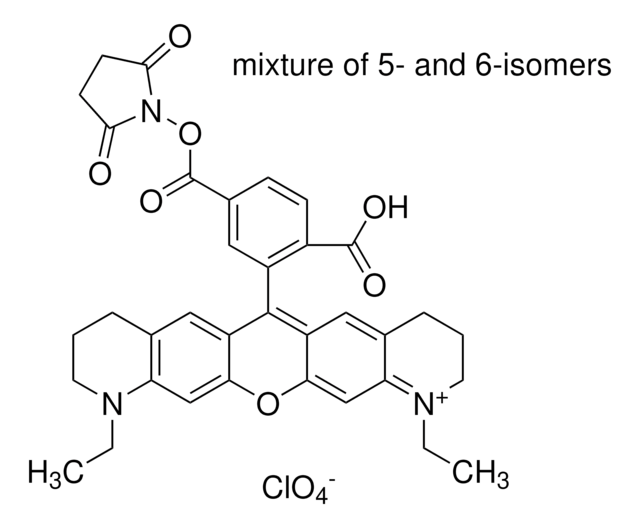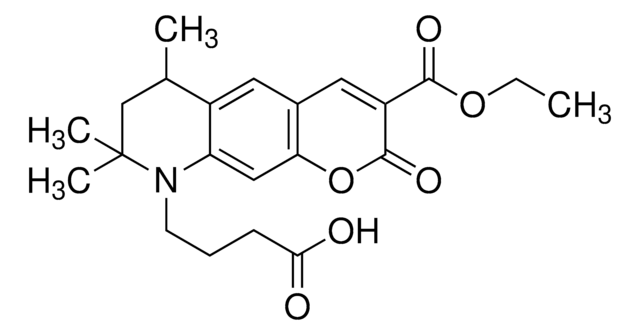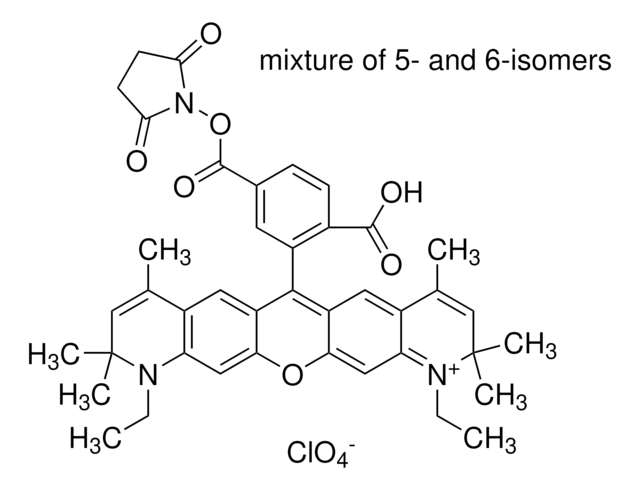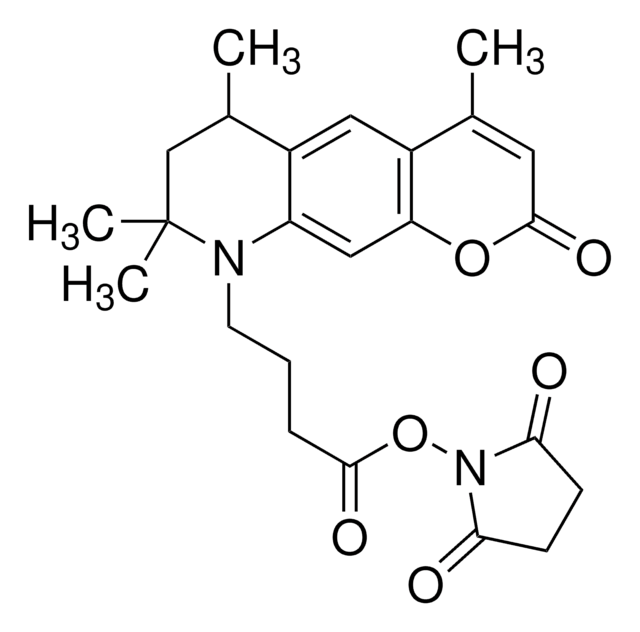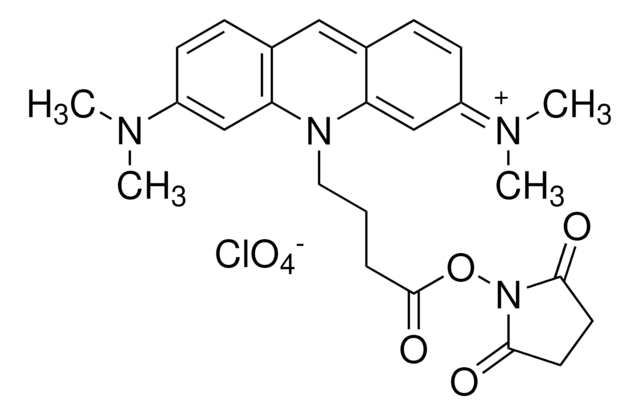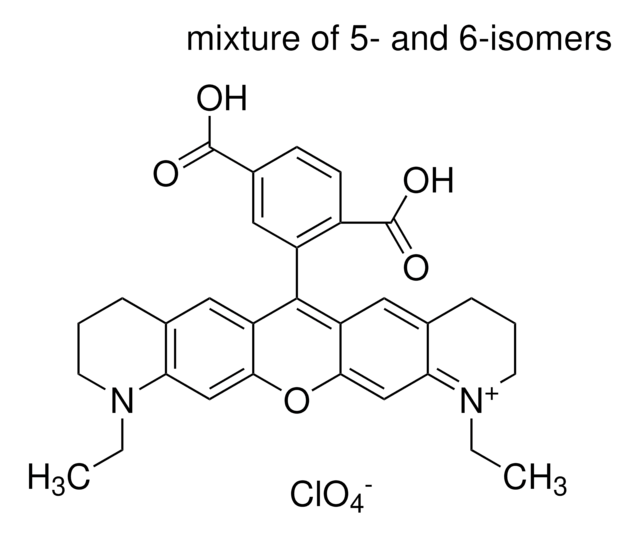16805
Atto 425 NHS ester
BioReagent, suitable for fluorescence, ≥90% (HPLC)
Sinonimo/i:
Atto 425-N-hydroxysuccinimide ester
About This Item
Prodotti consigliati
Nome Commerciale
BioReagent
Livello qualitativo
Saggio
≥90% (HPLC)
≥90% (degree of coupling)
Produttore/marchio commerciale
ATTO-TEC GmbH
Solubilità
DMF: soluble
DMSO: soluble
H2O: soluble
λ
in ethanol (with 0.1% trifluoroacetic acid)
Assorbanza UV
λ: 422-428 nm Amax
Compatibilità
suitable for fluorescence
Temperatura di conservazione
−20°C
Stringa SMILE
CCOC(=O)C1=Cc2cc3C(C)CC(C)(C)N(CCCC(=O)ON4C(=O)CCC4=O)c3cc2OC1=O
InChI
1S/C26H30N2O8/c1-5-34-24(32)18-12-16-11-17-15(2)14-26(3,4)27(19(17)13-20(16)35-25(18)33)10-6-7-23(31)36-28-21(29)8-9-22(28)30/h11-13,15H,5-10,14H2,1-4H3
PUEQEMDTFPYCDY-UHFFFAOYSA-N
Descrizione generale
Applicazioni
Altre note
Note legali
Codice della classe di stoccaggio
11 - Combustible Solids
Classe di pericolosità dell'acqua (WGK)
WGK 3
Punto d’infiammabilità (°F)
Not applicable
Punto d’infiammabilità (°C)
Not applicable
Dispositivi di protezione individuale
Eyeshields, Gloves, type N95 (US)
Certificati d'analisi (COA)
Cerca il Certificati d'analisi (COA) digitando il numero di lotto/batch corrispondente. I numeri di lotto o di batch sono stampati sull'etichetta dei prodotti dopo la parola ‘Lotto’ o ‘Batch’.
Possiedi già questo prodotto?
I documenti relativi ai prodotti acquistati recentemente sono disponibili nell’Archivio dei documenti.
I clienti hanno visto anche
Il team dei nostri ricercatori vanta grande esperienza in tutte le aree della ricerca quali Life Science, scienza dei materiali, sintesi chimica, cromatografia, discipline analitiche, ecc..
Contatta l'Assistenza Tecnica.